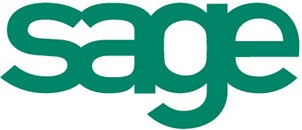Following on from such an overwhelming community feeling on Sunday at the Hull 10km run, we figured you may want to know how you can give tax efficient charity gifts.
Gift Aid
Let’s start easy, you’ve all heard of it and probably hesitated with the pen wondering if you tick the box at the bottom of a donation slip or side of a sponsorship form.
If you pay tax, tick the box. It’s that simple. It won’t cost you an extra penny and will be worth 25% extra to the charity.
Written declaration must be made if gift aid is to be reclaimed but these are usually given by the charity.
Membership subscription
You can pay membership subscriptions to a charity through Gift Aid, provided any membership benefits you receive do not exceed certain limits. The current limits on the value of benefits received relative to donations are:
25% of the value of the donation, where the donation is less than £100
£25, where the value of the donation is between £100 and £1,000
5% of the value of the donation, where the donation exceeds £1,000
This may seem a bit odd, but if you contributed £100 to a charity to obtain free entry (instead of £10) to their gardens and buildings they can only claim gift aid if you go less than 10 times.
Higher / additional rate tax payers
This is where it gets juicy.
If you are a higher/additional rate taxpayer, you can claim tax relief on the difference between the basic rate and higher/additional rate of tax (through your tax return).
So let’s say you donate £100 to charity – they claim Gift Aid to make your donation making it £125. You pay 40% tax so you can personally claim back £25.00 (£125 x 20%).
Relief is given either for the tax year of payment or in some cases it is now possible to elect to receive the benefit of the higher/additional rate tax relief one year earlier than previously.
You should therefore keep a record of payments made under Gift Aid for each tax year.
The time limit for claiming tax relief on Gift Aid donations is four years. Which let’s face it, should be enough time!
Payroll Giving
Another way that charity giving could be a little less painful is by setting up a Payroll Giving scheme which allows you to give regularly to charitable from your pay and get tax relief on it. Your employer will have to set this up.
The donation comes out of your salary before PAYE is worked out which means you pay tax only on the balance and you get your tax relief immediately at your highest rate of tax.
If you are a standard rate tax payer paying £100 a month, it’s effectively only costing you £80 (because of tax, that’s all you would see if it anyway)
Don’t get too giddy though, the amount you pay in national insurance contributions is not affected.
Gifts of shares or land
You will not be liable to pay CGT when you make a gift of assets (Eg, land/shares) regardless. Rightly so in our opinion.
What is event better… You may also get income tax relief.
So – in true accountant style. Let’s show you an example using numbers. Yey.
Mr Flintstone decided to sell his quoted shares in BedRock with the market value of £10,000. They only cost him £3,000 and he is a higher rate tax payer.
He decided to gift these to his charity (what a lovely guy!) and as a consequence is able to claim £4,000 income tax relief (40% of the value of the shares)
Said charity then sells the shares for £10,000 and keep the proceeds. Winning.
However, there is an alternative route to be taken.
If Mr Flintstone decided to sell the shares himself, he would make a capital gain of £7,000. With this being under the limit, there is no CGT. He can then gift the entire £10,000 to the charity in cash under gift aid. This means the charity can reclaim £2,500 (25% of the gift as described earlier). What’s more is that Mr Flintstone is now entitled to higher rate tax relief on the gross amount of the gift (20% of £12,500).Mr Flintstone is obtaining less relief (£4,000 – £2,500 = £1,500), sure, but the charity will have received more (The gift aid of £2,500)
Under any circumstance, gifting money and assets to charity is a commendable thing to do, but with a simple bit of planning you can utilise reliefs for yourself and ensure they get as much as possible, all from the same investment.
Talk to us today about accounting for tomorrow.









